Blackmagic Cinema Camera has been a hot topic for many cinematographers around the world since its announcement at NAB in Vegas 2012. Blackmagic's first foray into the camera market has caused some big waves and huge amounts of interest as it comes in with a very appealing set of features and at a very aggressive price point.
Blackmagic's unconventional approach to image capture with the BMCC has taken many by surprise meaning it will arrive without many of the conventions that most camera operators may be used to. It does however, pack a huge punch when it comes to getting quality recording options and bang for your buck. Now that the cameras are beginning to ship in quantity we figured we'd try to tackle some of the ins and outs of what people will need to know when approaching the camera. We also show you the accessories that can be used to make the camera system more functional for your application. Certainly the 13-stops of dynamic range and 12-bit record capability are very appealing features for a camera of this price giving it a huge advantage over the 8-bit capture available in other systems. Throw in a Da Vinci software license and Ultrascope capability and you have a very convincing sales pitch.
Mount options
You choose between EF and MFT (passive).
EF mount gives you access to Canon's very wide range of high quality, relatively affordable stills lenses. It also means that you will be able to control the iris with the camera's buttons provided that lens is supported. As of firmware release 1.2 which came out early Feb 2013, certain Canon EF lenses have now been mapped by Blackmagic so that you get a readout to show you what f-stop the lens is set to. This was a fairly major limiting factor on the previous firmware build as the only way to measure what f-stop you were at was by opening up as wide as the lens could go and then counting down in 1/3 of a stop clicks.
Because the Micro Four Thirds (MFT) has a passive mount Micro 4/3rd lenses for Panasonic GH3 or Olympus PEN Mini camera systems will not be compatible as they rely on electronic communication between the lens and mount. It will, however, work with manual MFT lenses such as those made by Voightlander and due to the short focal flange distance enables adaption to Nikon F-mount and most importantly PL mount. This makes it possible to work with top end cinema lenses such as Cooke, Zeiss, Angenieux zooms and a lot more top end glass.
Lens Options
When choosing lenses to use with the Blackmagic Cinema Camera it is important to note that the sensor size is exactly 15.81mm x 8.88mm, in between the Super 16 and Micro 4/3rds standards. This means it has a crop factor of around 2.3 when compared to full frame stills cameras and a crop factor of around 1.5 when compared to Super 35mm sensors (Alexa or F65) and 1.65 crop factor when compared with the Epic and Scarlet.
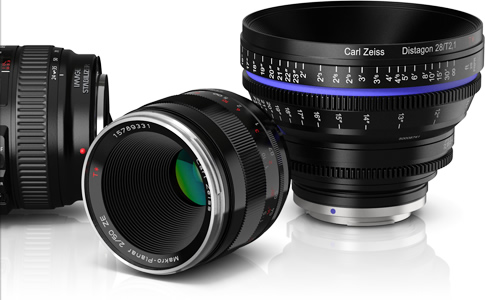
So any lenses you choose will have to be calculated carefully so you know what kind of field of view you are going to get.
A 14mm on this camera ends up with the similar field of view as a 21mm on a Super 35 camera or almost 35mm lens when on a 5D Mk II or III.
So all of a sudden your wide lenses aren't really that wide at all.
Also bear in mind that not ALL Canon EF glass will work with the EF version of this camera... They will all fit the mount but when it comes to having iris functionality on gelded Canon EF lenses and f-stop readout on the camera screen some lenses simply don't work. We have started compiling a list of Canon EF lenses we have tested with our cameras here. There is also a list on the Blackmagic Forum of which lenses people have tested themselves which should also help.
When using the MFT with an adaptor to PL, naturally any PL cinema lenses with aperture and focus rings on the barrel will work, Zeiss Cinema lenses the CZ.2 28-80mm, CZ.2 70-200mm, the LWZ 15.5-45mm and the Compact Primes will work provided you have the right mounts. This of-course is true as well for the Cooke's, Angenieux and any other 35mm cine lenses. The huge advantage of using cinema lenses when shooting motion pictures is that they do not tend to breathe when focusing or shift as you zoom through the range, they do cost a lot more to purchase so might be a rental option instead, lens technician Matthew Duclos explains here why there is such a difference in price but also a vast difference in quality between cine lenses and stills lenses.
Ergonomics
This camera will provide quite a lot of ergonomic challenges for the camera department although this won't be anything out of the ordinary for those who have been dealing with DSLR's for the last few years. Rigs are available from a swag of manufacturers with varying quality and functionality ranging in price point from the low hundreds of dollars up to double the camera's cost… and more.
In sales, we offer some great options from Zacuto including the BMCC Tripod Rig, BMCC Ultra Lite and from Chrosziel the 456-20ASLR Studio Kit is available now. The Cage for BMCC, Canon C300, or DSLR's which is expected to arrive in the next few month and discussed in detail by Jon Fauer here. We will be adding more options to our product line as they become available too.
Frame Rates
This is a sync-speed camera only. 30fps is top speed so don't rely on the BMCC for slow-motion.
We're in a PAL world so 25p, or 24p if you're shooting for direct to cinemas is the go here.
Recording format 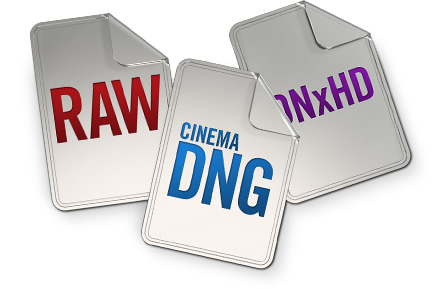
There are three different record format options for the BMCC's internal record mechanism. Shooting RAW 2.5K (Cinema DNG files), ProRes Quicktime (with .mov extension) or shooting to the Avid-friendly codec DNxHD (.mxf extension). Each of these options has its own advantages and depending on your post pipeline and turnaround time for your project you will be able to choose something to suit you.
RAW DNG's will give you the most resolution, latitude and options possible in post.
It basically records everything possible from the sensor so it will also give you the highest data-rate, meaning higher demand on your post gear and required storage space.
ProRes recording is limited to HD only 1920x1080 in 4:2:2. It is actually using the ProRes (HQ) variant of that family of codecs. This is convenient as it gives you manageable file sizes, while still leaving lots of room to move in the grade (especially when you shoot in the 'film' gamma mode). Great for HD pipelines on Adobe or Final Cut, a white paper on ProRes 422 can be found here.
The DNxHD option gives you a very similar file size and data rate as ProRes but is more Avid friendly. A white paper on DNxHD can be found here.
Media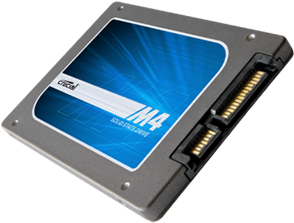
The Blackmagic Cinema Camera shoots to non-proprietary 2.5" SSD's. The same type of media that probably exists in your laptop. It is important to note that if you are intending to record the full 2.5K RAW DNG files that the camera is capable of then you need to use an SSD from the approved list of supported SSD's.
We offer the Crucial M4 512GB SSD's in our range, but any of the approved SSD's from the list of supported SSD's should work for the 2.5K RAW and compressed HD record options. Given that the new firmware also allows ExFAT formatting a simple Mac and PC compatible drive dock is all you should need to be able to offload files from your camera, verify that they have been backed up and then format the SSD in question before continuing to shoot.
It is worth noting that at this time there is NO WAY of formatting the SSD in camera so be sure to initialise it and format it accordingly in camera before you go to shoot. Instructions for this are in the BMCC manual.
Power
As the camera has an internal battery that cannot be removed, which lasts around 90 minutes from fully charged, shooting in the field for extended periods of time is something that may be an issue. Lemac Technical Services has put together the LTS V-Lock Power Supply for BMCC, a package to help to get the camera into a more convenient V-lock battery system, one which is already used very widely by cameramen around Australia. This system is built on the BMCC Tripod Rig Zwisse plate and includes a V-lock power plate, convenient coil cable & quality power connector to attach to the camera's AC power connector.
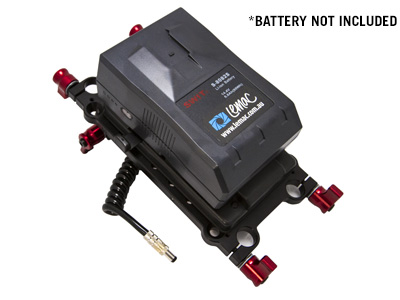
Monitoring
With a fairly decent on-board monitor there may be no need for you to use extra monitoring in controlled studio-shooting circumstances, however, as soon as you get outside into direct sunlight an Electronic Viewfinder (EVF) or a fairly substantial sun shade is going to be required.
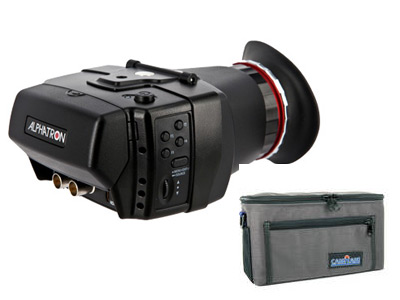
The Alphatron EVF is the perfect choice for this as it has HD-SDI input (& loop through), as well as HDMI in/out for is you want to use it with other systems such as a DSLR or FS100/700.
Another option would be to run into a Zacuto EVF Pro via one of the Blackmagic SDI-HDMI Battery Converters. As the camera has an HD-SDI output built in as standard, cable length issues that are associated with HDMI connectors are not a problem, and any other standard SDI monitor will work for onboard or studio monitoring from the camera.
Timecode
So there's no actual timecode inputs on the camera. You can set time of day code in the menus and receive a TC feed from the SDI out but if you're wanting to jam this camera for dual system the best way to do it at the moment is to record your timecode to one of the audio tracks and then get your post software to use that track as the LTC for dual system sound and camera syncing.
Audio
There are two 1/4" balanced analogue audio jacks on the side of the camera so anyone wanting to mic or line level into the camera from XLR's will need adaptor cables.
Lemac's new BMCC Accessory section will continue to grow as new products for the camera system hit the market, stay tuned for more updates information on this exciting new camera system. If you are interested in buying the Blackmagic Cinema Camera or renting it from us to see if it is the right tool for you then please don't hesitate to contact us or visit your nearest showroom.